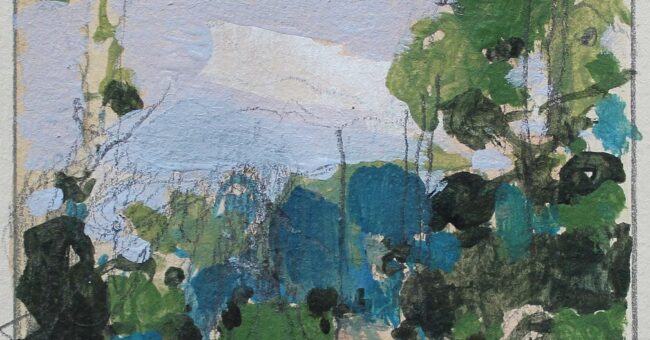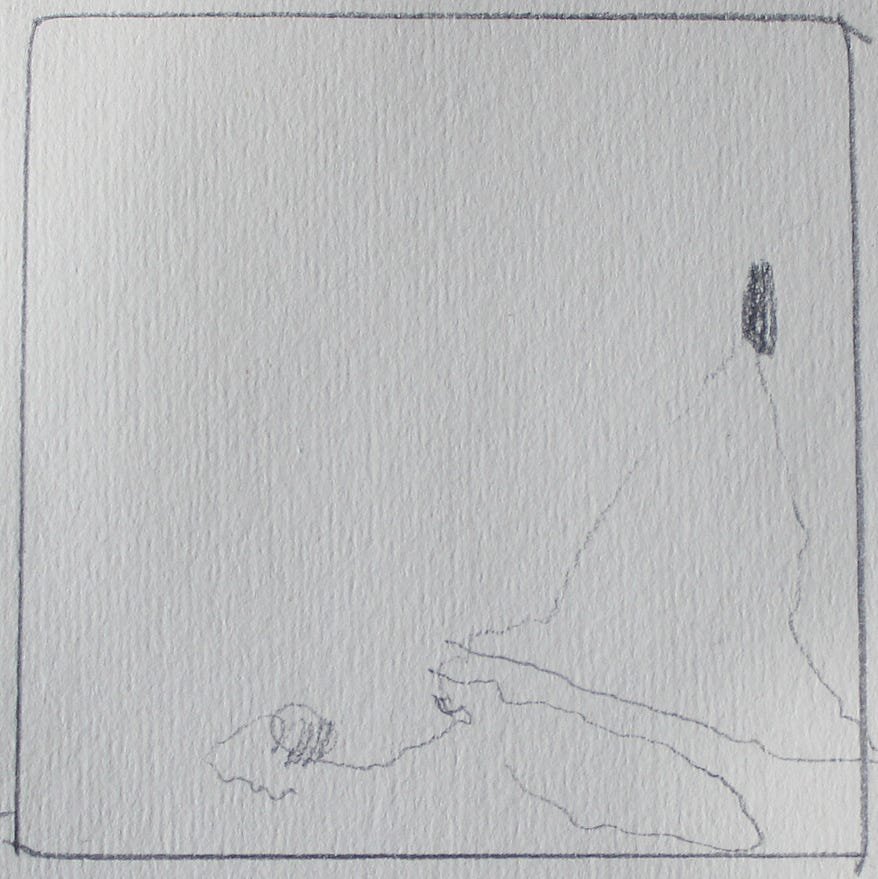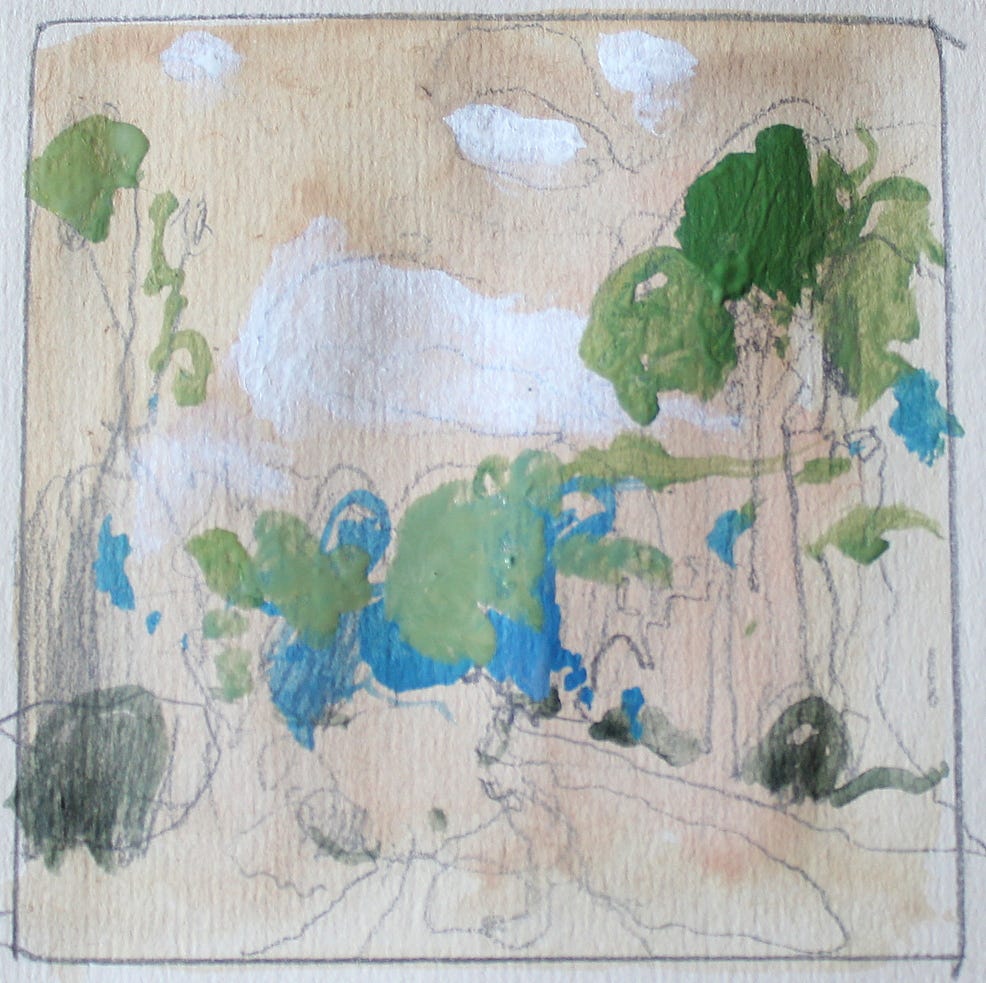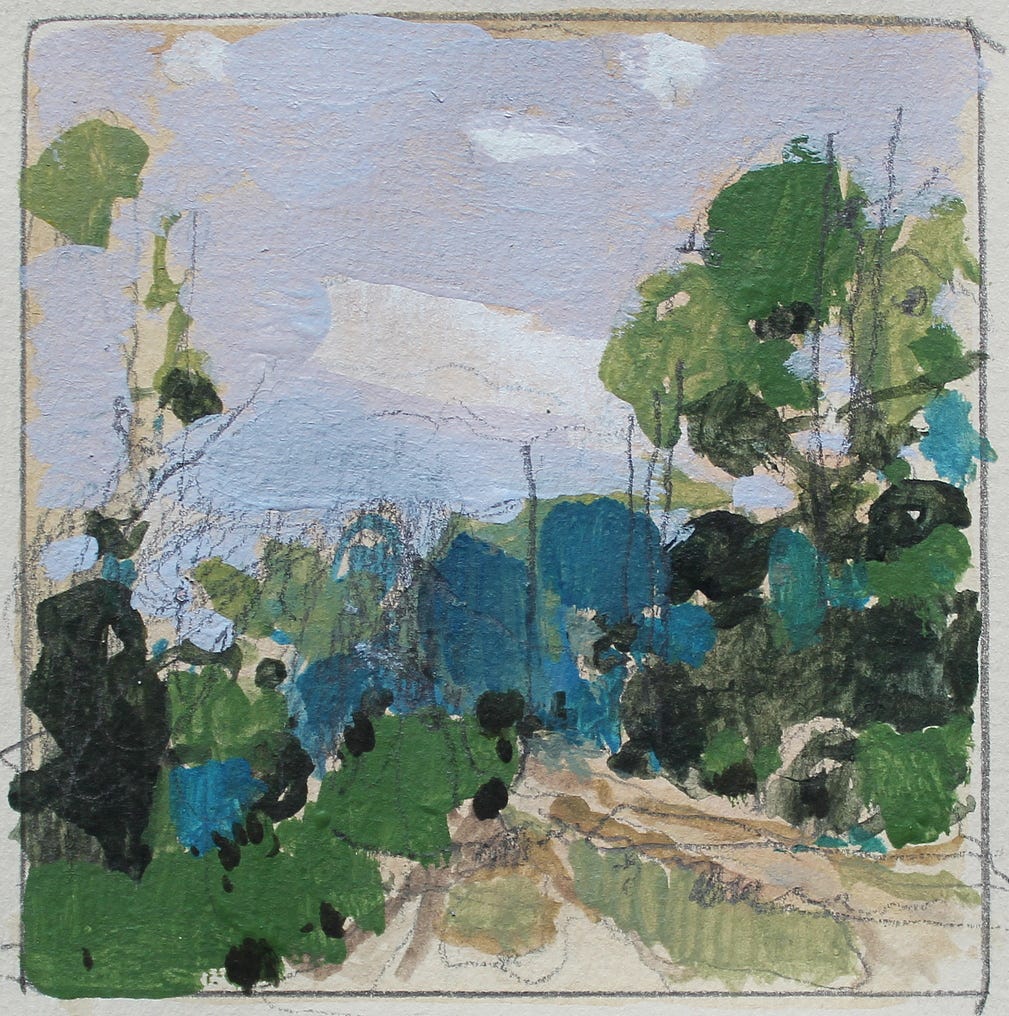
In all activity, habituation takes place. Repetition over time causes processes to become ingrained. This can lead to a loss of energy for the activity because one has determined in advance that B follows A to some inevitable, predictable end. So your body and brain say, “If I know this already, why should I do it again?”.
This is not all bad of course. We develop certain habits and mold our behaviors to favor specific outcomes. And without a lot of this we might be in some trouble.
But, too much of a good thing can cause problems…..namely, that gradual diminishing of excitement and pleasure as we work through.
In painting this can be a real problem but there are some things that can be done to ameliorate this tendency.
I make a lot of paintings and drawings so I have to watch to ensure that my excitment for the activity remains always high.
One specific thing I do to help this along is to change painting procedures very regularly. Very often I’ll simply change the rules determining the process and this recharges my batteries instantly.
In this little piece I’m working entirely from memory and invention, with no visual reference in front of me at all. Simply making this change from a more observational approach is enough to re-excite the task.
Obviously a lot of things remain the same, but some of my key painting responses are different and this leads to a positive change in my energy for the task.
There are a lot of ways to make such changes that alter your energy. These changes involve invention based on directions you want to move in. They will be different for every person. It’s important to note that the changes need not be major or total. Small changes to material, size, substrate, method, subject, can all work well for this. And, this willingness to change and invent, in response to you gauging your own energy, should be continual.
In this piece I’m working from a memory of being in a farm valley in spring when I was 5 years old. I remember watching crows in the tall trees. The lay of the land, and the mood of the day, were very important.
There is an intention only to move towards this mood and the feeling of that day in some way. While the memory guides the action in some ways, the demands of picture making are of course always primary as well….those never leave. And the painting basically resolves itself after a certain number of actions.
Once a painting is under way a certain automatism sets in that is quite pleasant. This has to do with how elements and principles of art interact. Pictures have visual demands and at a certain stage, they lead the artist…not the other way around.
The nice thing about working from memory is that the more abstract qualities of painting are always very much at the fore. If sometimes the painting slips into a completely nonobjective orientation, I don’t necessarily resist that either. That’s not so much the case in this piece though.
In all these little things there is an under-wash, usually a pinkish tone. It’s possible to play with that in a lot of ways too, to change its quality in any number of ways, or to leave it out entirely.
As this piece came close to completion it called for a graphic element so I simply went back in with pencil, but in a very brief way.
I try to contantly keep in mind that the painter is not only the one who puts the materials onto the page, but also the one who makes up ALL THE RULES. It’s important to think about how we constantly assess those rules, and how we match those rules to our truest and most desired intentions.
When your energy seems even a touch low, change the rules a bit to give more juice to your intention, and watch your energy go up!
As always, the work I produce on a daily basis is available at my two sites:








